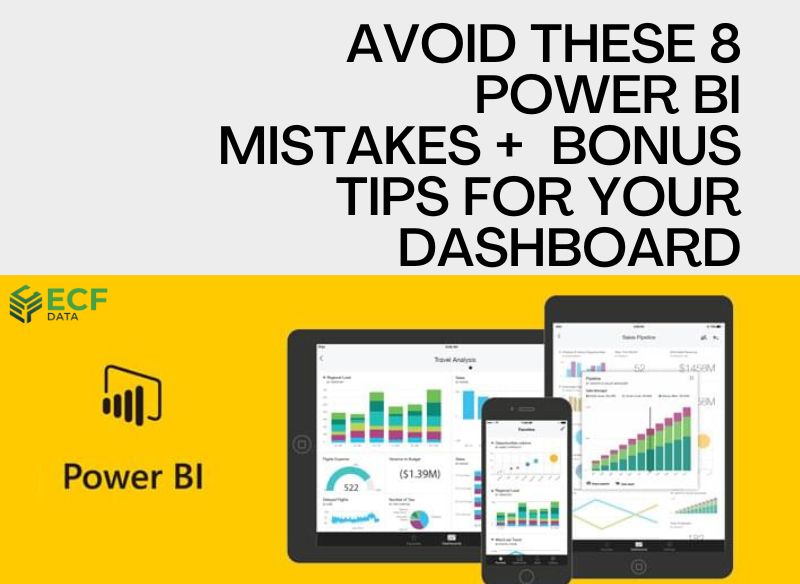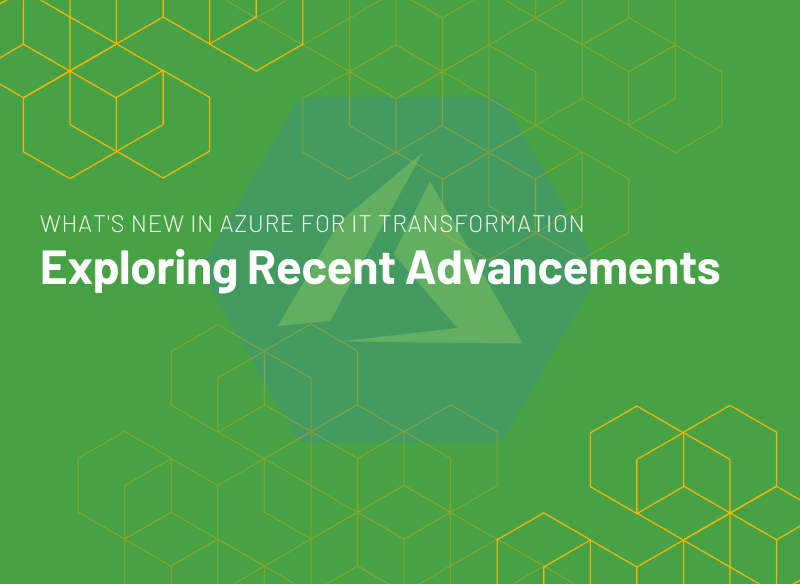-
By: Janina Criador
- IT Consulting
- October 4, 2022
- Comments 0
Avoid These 8 Power BI Mistakes (and BONUS: 8 Tips to Make your Dashboards Better)
Data is ultimately any organization’s asset if it is transformed into information that facilitates actionable insights. The organization’s economic support can help businesses increase revenue, strengthen relationships with stakeholders, build new revenue streams, improve operations, embrace innovation, decrease risks, enhance current products’ quality, and establish competitive differentiation.
A powerful tool that helps you analyze and visualize your data and translate it into actionable information can do wonders for any company. Microsoft Power BI makes this possible by offering immense features such as creating productive reports, maximizing data use, and making complex topics appealing and accessible.
However, as it is packed with so much power and capabilities, it is understandable to feel intimidated, overwhelmed, and confused. Our goal at ECF Data is to guide you through the process of making the most out of the enterprise BI platform and your data. In this blog, we list down the most common mistakes we’ve observed and tips on resolving and avoiding them so that you can attain a smoother Power BI journey.
Power BI Mistake #1: Going haywire with dashboards
Data visualization is among the most powerful features of Power BI. But it comes with a responsibility. Squeezing in hard-to-understand data, complicated layouts, and fancy visuals may be tempting to use, but it can drastically affect data management and business decisions.
What you can do: Help your company’s decision-makers understand information and harness data-driven decisions. You must always know your audience and assist them in understanding your report through your smart, interactive, and easy-to-read dashboards. Try to make your reports follow the same direction. Using too many visuals is not only eyestrain but also slows report performance.
Remember, dashboards should be easy-to-understand and actionable.
Power BI Mistake #2: Not using the appropriate chart
Power BI is known for its eye-catching and interactive visuals. Based on research, the human brain digests visual information more than texts. Using the wrong chart to convey data can lead to inaccuracies and failed business decisions.
What you can do: Power BI offers a wide range of selections that allows you to represent the five types of data usage such as distribution, comparison, composition, relationship, and representation. Found in AppSource, you can select Microsoft-certified elements, meaning they have gone through rigorous tests to ensure high performance. Remember that visuals should be easy to read, quick to understand, and tell a story.
Studies have also shown that pie charts are not the most ideal for communicating data. Our brains are wired to see data better if they are presented to compare lengths and heights, as with line or bar charts.
Power BI Mistake #3: Using unreliable data
It is the most common business intelligence mistake that we encounter. Using unreliable, untrustworthy, and pivoted data that significantly affect data management and visualization may cause a company substantial loss.
What you can do: To create data visualization in dashboards for pertinent insights, use structured data from reliable sources, and develop accurate dashboards for valuable insights.
Power BI Mistake #4: Being inconsistent
Not paying extra attention to the data visualization report details can lead to ineffective insights and data management inconsistencies. Examples include different fonts and sizes, unaligned graphics, excess data, etc. Typically, these are the most common errors in Power BI projects.
What you can do: This is not something new, but we must reiterate it. Consistency goes a long way. Look into the details! Ensure that your fonts are of the same size and type, that there is no excess data, and that all your visuals are aligned.
Power BI Mistake #5: Data overload
We see many users trying to squeeze in so much data in one dashboard. But too much data displayed in a single pane can lead to disarray and confusion instead of a better understanding and knowledge through dashboards. The mass of metrics in a single report can cause distraction and mislead the decision-makers from the message you are trying to convey.
What you can do: It may not be as simple as it sounds but curating everything is vital. Try to give one report specific and focused directions. It will streamline the metrics you use on your data and achieve a more comprehensible outcome. If you must present separate listings, then do as you must. One super crammed report is no better than many that provide coherent and logical insights.
Power BI Mistake #6: Making a Dashboard without a layout
It’s a known fact that any successful project starts with a plan. Not only will it save you time, effort, and money, but it will also give you a better direction and provide a solid foundation for your report. Making a dashboard without any strategy can only lead to confusion because of the mass of metrics and sway you from the message you are trying to convey.
What you can do: Use data storytelling, a concept of building a gripping narrative regarding complex data and analytics. Through this, a much clearer and simplified picture can be attained, and the audience can engage with the content to positively impact your decisions. Power BI is the perfect platform to visualize that data and tell a story.
Power BI Mistake #7: Labelling Incorrectly
Regarding data visualization, it is essential to place all the labels correctly. Aside from that, balancing, not overdoing it and not missing out on crucial details is critical. Tilted and overlapping labels and not using legends are also some of the common pitfalls that we see often.
What you can do: Regarding this error, returning to the basics would never hurt. Follow the golden rule, “Keep it Sweet and Simple.” Communicate to your audience precisely what they need about the data visual. It’s also important to note that labels should be vertical or horizontal ONLY. Anything positioned diagonally only causes neck and eyestrain, so edit as you should.
Power BI Mistake #8: Committing Visual Noise
Power BI reports aim to present remarkable business insights using data visualizations. Using this to your advantage as a powerful platform can spotlight what should be paramount: your data. Getting the attention of your audience can be done through eye-catching designs but getting overboard with the styling tends to distract than convey a message.
What you can do: Keep the elements you use at a minimum. There are certain rules that we suggest keeping in mind so that you can avoid the visual clutter:
- The tiles per dashboard should be no more than 10.
- Colors are recommended to be only about 3-4.
- Encode your quantitative data neatly, not exceeding 3-4 numbers. (Ex. Instead of 1,200,000, try 1.2 million.)
- Dates should be consistent. If you’re using DD/MM/YYYY, that format should be the same throughout the report.
- If you’re using images or icons, ensure that they are not only relevant to one department.
We hope we’ve shared some helpful tips to help you navigate your Power BI journey. If you are interested in more information on other Microsoft solutions, we are here to help benefit your organization, hop on our other blog posts.









